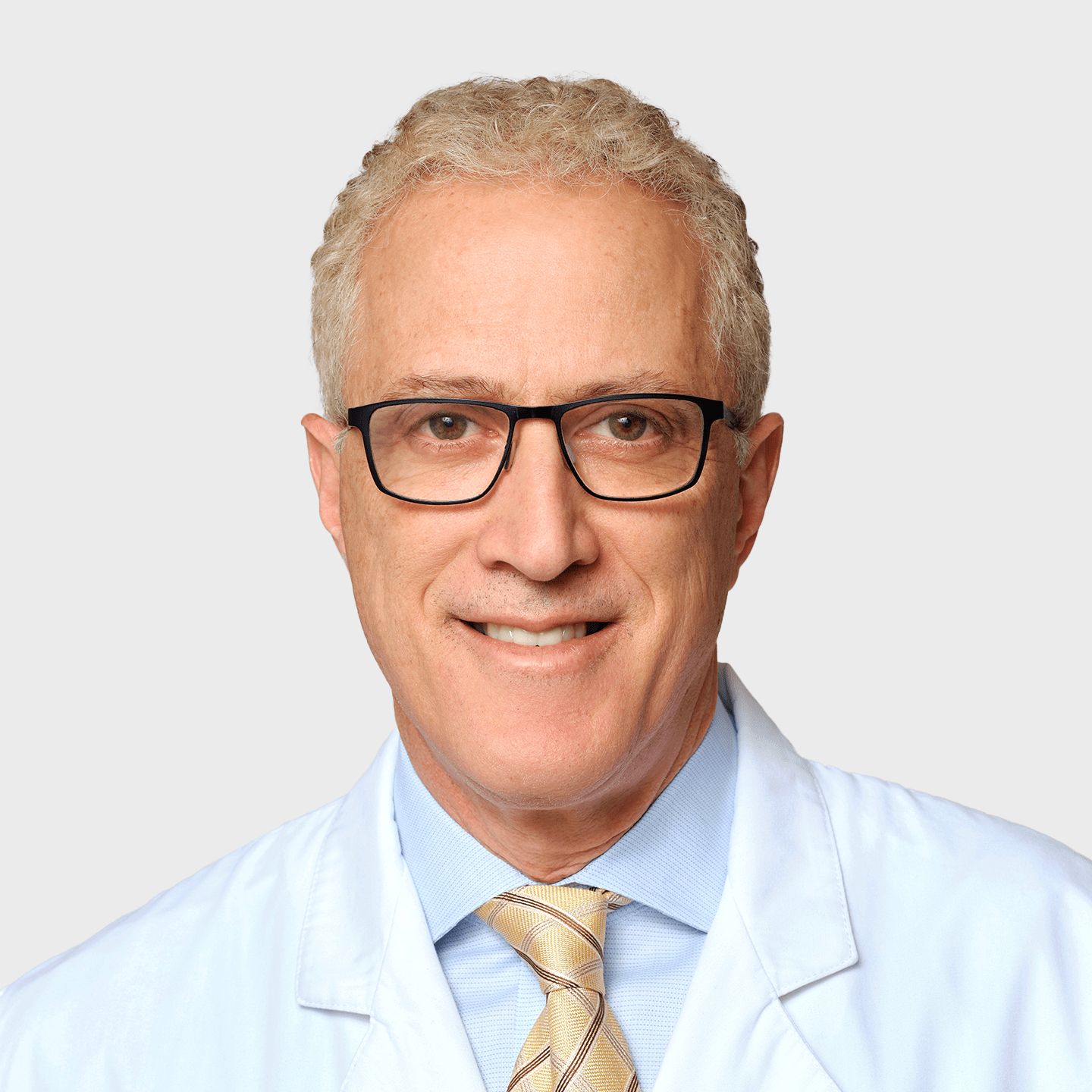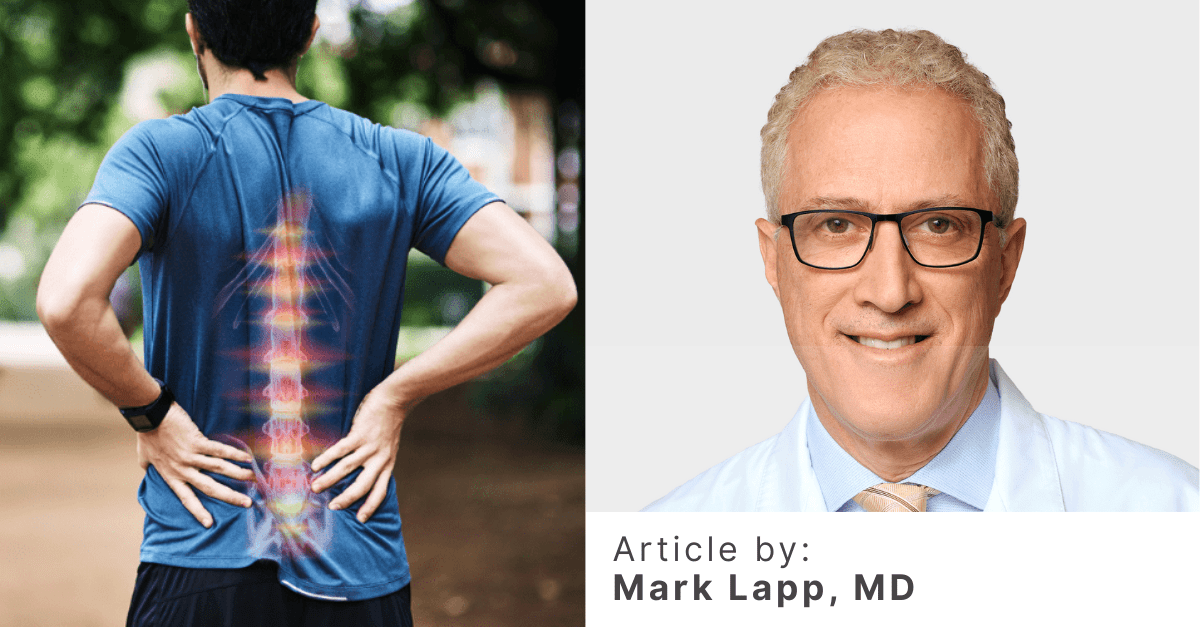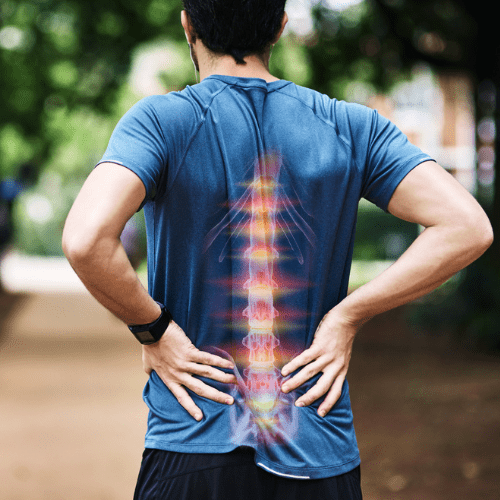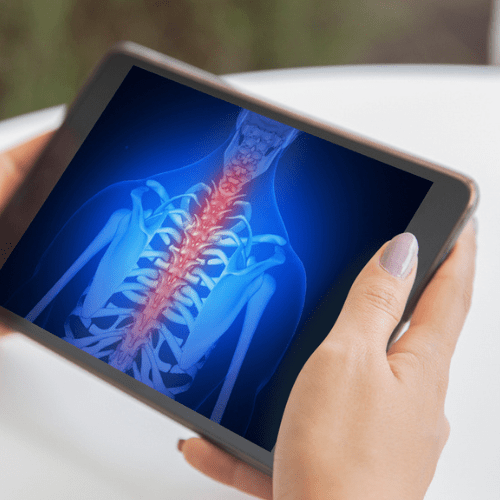
Featured Doctor
Mark A. Lapp, MD
Get to know Dr. Mark Lapp, a board-certified, fellowship-trained orthopedic spine surgeon at Orthopaedic Surgical Associates.
View Profile

Degenerative Disc Disease (DDD)
What is degenerative disc disease?
Degenerative disc disease is the natural wear-and-tear of spinal discs. Despite being a part of normal aging, this wear and tear can be painful.
What are the symptoms?
People typically experience chronic back or neck pain which may worsen when sitting, bending or lifting.
How is it treated?
Non-surgical options include activity modification, physical therapy, medications and injections. If the disease is in the cervical spine, a cervical arthroplasty (disc replacement) is a fusion-sparing option that maintains motion while an anterior cervical discectomy and fusion (ACDF) can stabilize the spine by fusing the affected vertebrae. If the disease is in the lumbar spine, fusion is considered in severe cases.
Radiculopathy
What is radiculopathy?
Radiculopathy, commonly referred to as a pinched nerve, is the compression or irritation of a nerve root in the spine, often due to conditions like stenosis, a herniated disc, spondylolisthesis, or degenerative scoliosis. When radiculopathy occurs in the upper back or neck area, it is called cervical radiculopathy. In the lower back, it is called lumbar radiculopathy or, more commonly, sciatica.
What are the symptoms?
With cervical radiculopathy, people often experience radiating pain, numbness, weakness, or any combination thereof in the arms. With lumbar radiculopathy or sciatica, people often experience these symptoms in the legs or buttocks.
How is it treated?
Anti-inflammatory medication, physical therapy and injections are conservative treatment methods. An anterior cervical discectomy (ACD) can be performed for cervical radiculopathy – it removes the disc and decompresses the nerve and is usually followed by fusion or cervical disc replacement. A minimally invasive lumbar discectomy is preferred for lumbar radiculopathy due to disc herniation.
Spinal Stenosis
What is stenosis?
Stenosis is the narrowing of the spinal canal, which can put pressure on the nerves in the spinal cord. Stenosis is often caused by arthritic changes that come with age, such as the development of bone spurs or the thickening of ligaments in the spine.
What are the symptoms?
With stenosis in the cervical spine, or neck, people often experience radiculopathy – arm pain numbness, or weakness, or any combination thereof. With stenosis in the lumbar spine, or lower back, people often experience these symptoms in the leg or buttocks, commonly known as sciatica.
How is it treated?
Spinal stenosis can be managed through nonsurgical treatments such as physical therapy, medications like nonsteroidal anti-inflammatory drugs (NSAIDs), and corticosteroid injections to reduce inflammation. When appropriate, surgery may be performed to provide more space in the spinal canal and decompress the nerves.
Bulging Disc and Herniated Disc
What is a bulging disc, and what is a herniated disc?
A bulging disc is when the outer layer of a vertebral disc protrudes outward, without rupture, potentially pressing on a nerve. A herniated disc is typically more severe, and may result in the inner gel of the disc leaking out and compressing nearby nerves.
What are the symptoms?
People often experience sudden back or neck pain or radiated nerve pain with a bulging disc, but it may be milder than if they had a herniated disc. Back pain is more common than leg pain.
How is it treated?
Bulging discs and herniated discs can be treated non-surgically with rest, physical therapy, medications and injections. Surgical options include a minimally invasive discectomy (lumbar or cervical) and anterior cervical discectomy and fusion (ACDF) or disc replacement.
Spondylolisthesis
What is spondylolisthesis?
This occurs when one vertebra slips forward over the one below it, usually in the lumbar spine. The two more common forms of spondylolisthesis are degenerative, which is caused by arthritic changes in the spine over time, and isthmic, which is due to a stress fracture in the spine, usually sustained during the teenage years of a person’s life.
What are the symptoms?
People typically experience lower back pain, leg pain or sciatica and potentially numbness or weakness with walking.
How is it treated?
Non-surgically, spondylolisthesis can be treated with physical therapy, core strengthening, bracing and pain management methods. The typical surgical treatment is a spinal fusion, however in low-grade slips, decompression surgery might be an option if spinal stenosis is without dynamic instability.
Degenerative Scoliosis
What is scoliosis?
Scoliosis is the abnormal sideways curving of the spine. Scoliosis often occurs during an individual’s growth years, and is idiopathic, meaning it has no identifiable cause. Degenerative scoliosis, on the other hand, occurs over time due to wear and tear, and arthritic changes in the spine.
What are the symptoms?
Symptoms of degenerative scoliosis can vary based on severity, but include back pain, stiffness, and challenges with balance and walking due to altered posture. In cases where their abnormal curve puts pressure on a nerve, people with scoliosis may experience symptoms of radiculopathy.
How is it treated?
Degenerative scoliosis can be treated non-surgically with physical therapy to strengthen the muscles supporting the spine, medications like nonsteroidal anti-inflammatory drugs (NSAIDs), and bracing to support the spine. In severe cases, surgery may be recommended to decompress nerves in the spine, and if appropriate, to correct the deformity.







